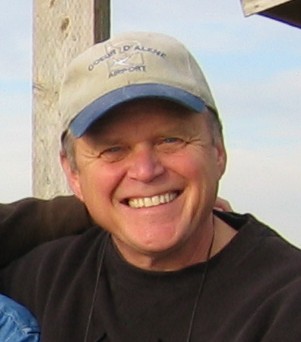Dances With Coyotes
Here’s another Sam Hurst editorial for your edification, elucidation, and education. Damn, he’s good:
“A curious story appeared on network evening news broadcasts last Wednesday night. A coyote was discovered roaming through Manhattan.
Can you imagine, a lost coyote is a national news story? Not a dancing coyote, or a flying coyote, just a lost coyote. After an hour of chasing the terrified mutt through Central Park, wildlife officials tranquilized it and carted it off to a refuge, where it would presumably return to more typical coyote behavior, like munching on suburban family pets.
The choice of New York officials to spend thousands of dollars and dozens of man-hours to "relocate" this traumatized scrap of wildlife stands in stark contrast to the reception a coyote would receive in western South Dakota. We would, of course, shoot it and hang it from a fence post.
It got me thinking about why two such dramatically different cultures would respond in such drastically different ways, and I came to a simple conclusion: Wilderness is valued in direct proportion to its scarcity.
In New York, they think they are saving something rare. They don't want to kill the last coyote. In South Dakota we don't ever think we're killing the last remnant of wilderness. There's always more.
For a century the struggle of "forward looking" settlers has been to tame the wilderness, not protect it. Square it up. Plow it. Graze it. Pave it. Poison it. Mine it. Fence it. We have built an economy that celebrates our obsession with domesticity, and now, we are lost in the wilderness.
The campaign of ranchers, hunters and conservationists to secure the wilderness character of a few hidden corners of the Buffalo Gap National Grasslands has floundered on the alter of "multiple use," a mid-20th century philosophy of democratic utilitarianism that asserts the equal right of every American to use the public lands any way they want. It's an entitlement. First come, first served.
The irrationality of this philosophy can be seen on any summer weekend at Railroad Buttes, 30 miles east of Rapid City, a few miles south of Farmingdale. Cattlemen lease the pasture. Hunters use the walls of deep gullies to sight their rifles. Rock hounds stumble over the eroding badlands, eyes to the ground, looking for agates. And, perched squarely atop the pyramid of self-indulgence, motorcycle riders burn across the pastures, cutting new trails, grinding up and over the buttes in spectacular displays of immortality, with broken arms and twisted axles laying confidently in wait on the other side of each daredevil leap.
The Forest Service has set aside over 5,000 acres (5,000!) for the motorcycles and four-wheelers. Trails have been posted at the boundaries, where an effort is being made to protect scenic views, or sensitive erosion areas, or wildlife, or cattle pastures. But there's something powerful about sitting on top of an engine. To hell with the signs. Puffed up with their "right" to use the grasslands, the riders simply keep going. Who's going to stop them? The Forest Service has no law enforcement.
Someday, I imagine, an unsuspecting tourist family from New York, hoping to catch a glimpse of a coyote, will be driving along the gravel road and hit a nine-year-old on a speeding motorcycle trying to jump the road. He will fly through the air and be shot by a stray bullet from a rifle that has been in the closet all winter and drifted out of registration.
The tumbling motorcycle will land on the head of an 83-year-old agate hunter in a wheelchair, who has driven his motor home into the pasture and set up camp at the eroding edge of a cattle trail. Everyone will blame the Forest Service.
There was a time when the philosophers of our young nation believed that wilderness made Americans unique. These were immigrants from the polluted and strife-ridden slums of European cities. Wilderness tested us, molded our character, not because we had tamed it, but precisely because we did not control it. Wilderness gave us humility, a deep knowledge that we were part of nature, not masters. God lived in the wilderness.
There is no going back from Railroad Buttes. It is on the fast track to sterility. But 20 miles down the road, on the banks of the Cheyenne River, we still have a chance to ante up.
Let the Indian Creek wilderness be governed by a different ethic. Let it be a nursery for wildlife. Let it be a place where young people can be tested and shaped by nature. Let it be quiet. Let it be a place where we walk. Let it be God's home.
This week Indian Creek is under a foot of snow. Buffalo are grazing the prairie dog town on Zebell Table. The first migrations of bluebirds and meadowlarks have arrived from the tropics. Their blues and yellows flit against the white glare.
In a month it will be lush green - the fleeting summer seductress of a poor Irish homesteader. The horizontal bands of yellow and red badland sediment will leap out against the blue sky.
If you doubt the value of wilderness, if you suspect that it is worthless, call me, and we'll take a walk. I can promise you we will see the footprints of coyote.”


0 Comments:
Post a Comment
<< Home